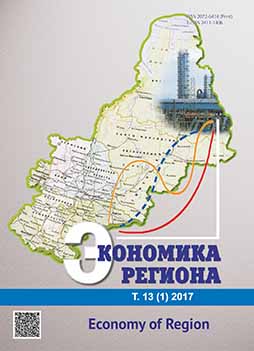Spatial Planning and Policy Evaluation in an Urban Conurbation: a Regional Agent-Based Economic Model
Spatial Planning and Policy Evaluation in an Urban Conurbation: a Regional Agent-Based Economic Model
Author(s): Luzius Stricker, Moreno BaruffiniSubject(s): Economy, Geography, Regional studies
Published by: Институт экономики Уральского отделения Российской академии наук
Keywords: firm localization; urban agglomeration; territorial indicators; spatial planning; municipal economy; urban roles; municipalities’ characteristics; urban policy evaluation; Agent-Based Models, simulati
Summary/Abstract: This paper studies different functions and relations between 45 agglomerated municipalities in southern Switzerland (Ticino), using a territorial agent-based model. Our research adopts a bottom-up approach to urban systems, considering the agglomeration mechanism and effects of different regional and urban policies, and simulates the individual actions of diverse agents on a real city using an Agent-based model (ABM). Simulating the individual actions of diverse agents on a real city and measuring the resulting system behaviour and outcomes over time, they effectively provide a good test bed for evaluating the impact of different policies. The database is created merging the Swiss official secondary data for one reference year (2011) with Eurostat and OECD-Regpat. The results highlight that the understanding of municipalities’ functions on the territory appears to be essential for designing a solid institutional agglomeration (or city). From a methodological point of view, we contribute to improve the application of territorial ABM. Finally, our results provide a robust base to evaluate in a dynamic way various political interventions, in order to ensure a sustainable development of the agglomeration and the surrounding territories. Applying the analyses and the model on a larger scale, including further regions and conurbations, and including more indicators and variables, to obtain a more detailed and characteristic model, will constitute a further step of the research.
Journal: Экономика региона
- Issue Year: 13/2017
- Issue No: 1
- Page Range: 261-275
- Page Count: 15
- Language: English

